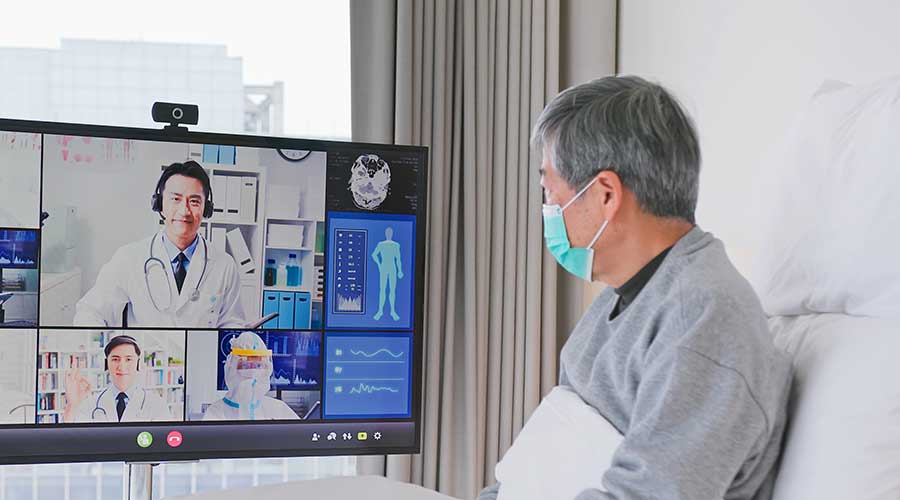In recent years, telehealth or telemedicine has become an integral component of healthcare systems and facilities. To help healthcare facilities managers implement and support the technology that provides telehealth, the U.S. Department of Energy’s Better Buildings program has released a document, The State of Virtual Healthcare. The document provides insights and best practices for telehealth, including carbon reduction, space utilization, equitable access and technology.
During the COVID-19 pandemic, telehealth became the primary route of treatment for many patients and doctors. The goals of telehealth are to make healthcare more accessible to patients who have limited mobility, time or transportation options and those who live in rural or isolated communities. While addressing accessibility, telehealth also sets health systems on a path to meet their decarbonization and energy reduction goals.
Regarding space utilization, the document offers insights, resources and case studies for managers. Telehealth has allowed healthcare providers to reevaluate the way medical spaces are utilized. In the wake of fewer patients on-site, health systems have become creative with their spaces to accommodate the increase in virtual visits.
Telemedicine can take place throughout the healthcare system, including primary and ambulatory care centers, cancer centers, emergency departments, patient rooms and many other clinical and nonclinical spaces. Many healthcare providers have opted to integrate telemedicine tools directly into patient rooms, like monitors for conducting virtual visits. These monitors can be used for more than virtual visits, including for entertainment, education programs, food orders, and more. Another option for healthcare workers is mobile telehealth carts. Staff can easily transport carts between rooms that can also double as charting stations for nurses and clinicians.

 Disinfectant Dispensers in Healthcare Facilities Often Fail to Deliver Safe Concentrations: Study
Disinfectant Dispensers in Healthcare Facilities Often Fail to Deliver Safe Concentrations: Study Duke University Health System Receives $50 Million for Proton Beam Therapy Center
Duke University Health System Receives $50 Million for Proton Beam Therapy Center UT Southwestern Experiences Data Breach Through Calendar Tool
UT Southwestern Experiences Data Breach Through Calendar Tool Protecting Patient Data: Strategies and Tactics
Protecting Patient Data: Strategies and Tactics Duke Health to Acquire Lake Norman Regional Medical Center
Duke Health to Acquire Lake Norman Regional Medical Center